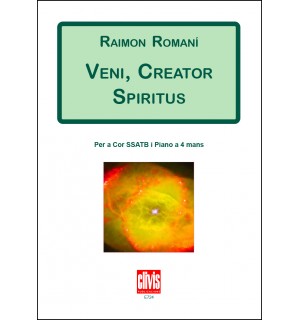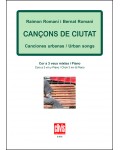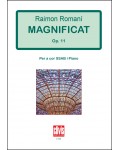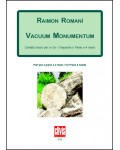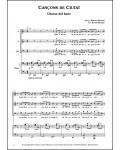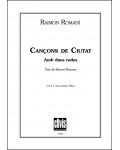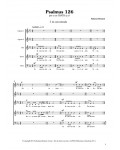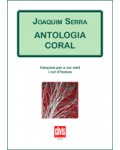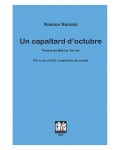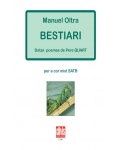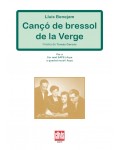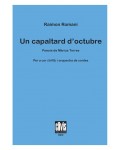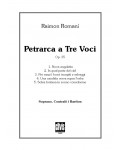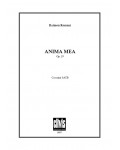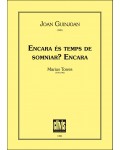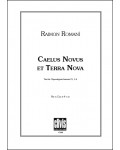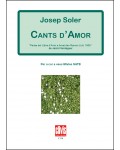
No products
Prices are tax included
Product successfully added to your shopping cart
There are 0 items in your cart. There is 1 item in your cart.
- English
- Castellano
- Català
Veni, Creator Spiritus (Choir+Pno4h)
DE724
The work consists of different parts which echo the nuances of the text, with two musical motifs standing out that reflect the parts of the hymn. As well as other secondary motifs, the long and melodic theme of Accende lumen sensibus stands out. However, the most glorious moment of the melody is found in the stanza Deo Patri, constituting the culmination of the piece.
| Period | 20th c. |
| Instruments | SSATB Choir, pno. 4h |
| Text language | Latin |
| Pages | 28 |
| Time | 12 min. |
| Contents | piano score |
| ISMN | 979-0-3502-0807-2 |
| Price of print edition | 20,80€ |
| Edition | Digital |
Veni, Creator Spiritus takes the text of a medieval hymn that invokes the creative spirit. The work has a triumphal air about it, as if the creative spirit were already being felt at the very moment of its invocation. It is an expression of vitality, power and positivity.
The composition of the work was inspired in 2010 by a series of exchange concerts between two choirs: the Coral del Conservatori of Sant Cugat del Vallès and the Junges Ensemble from Reutlingen (Baden-Württemberg, Germany), where it was premiered in that same year.
The work consists of different parts which echo the nuances of the text, with two musical motifs standing out that reflect the parts of the hymn. The first and main motif corresponds to the first stanza, Veni, creator spiritus, which also appears at the end of the piece. As well as other secondary motifs, the long and melodic theme of Accende lumen sensibus stands out, treated simply yet with great depth. However, the most glorious moment of the melody is found in the stanza Deo Patri, constituting the culmination of the piece. A final Amen ends the hymn.
The work is for a five-voice choir (SSATB) with no solo parts, accompanied by an orchestra, and is of average difficulty both vocally and instrumentally. The piece lasts around 12 minutes.
The four-handed piano version can also be performed in concert.
Raimon Romaní

